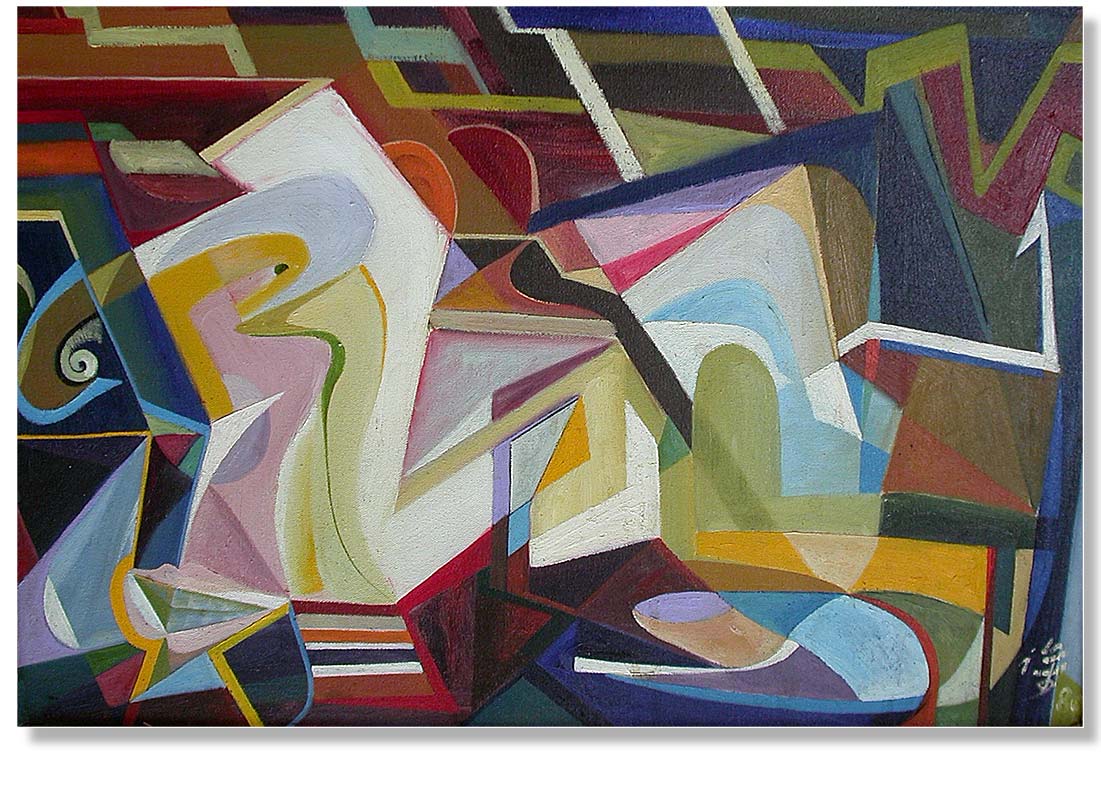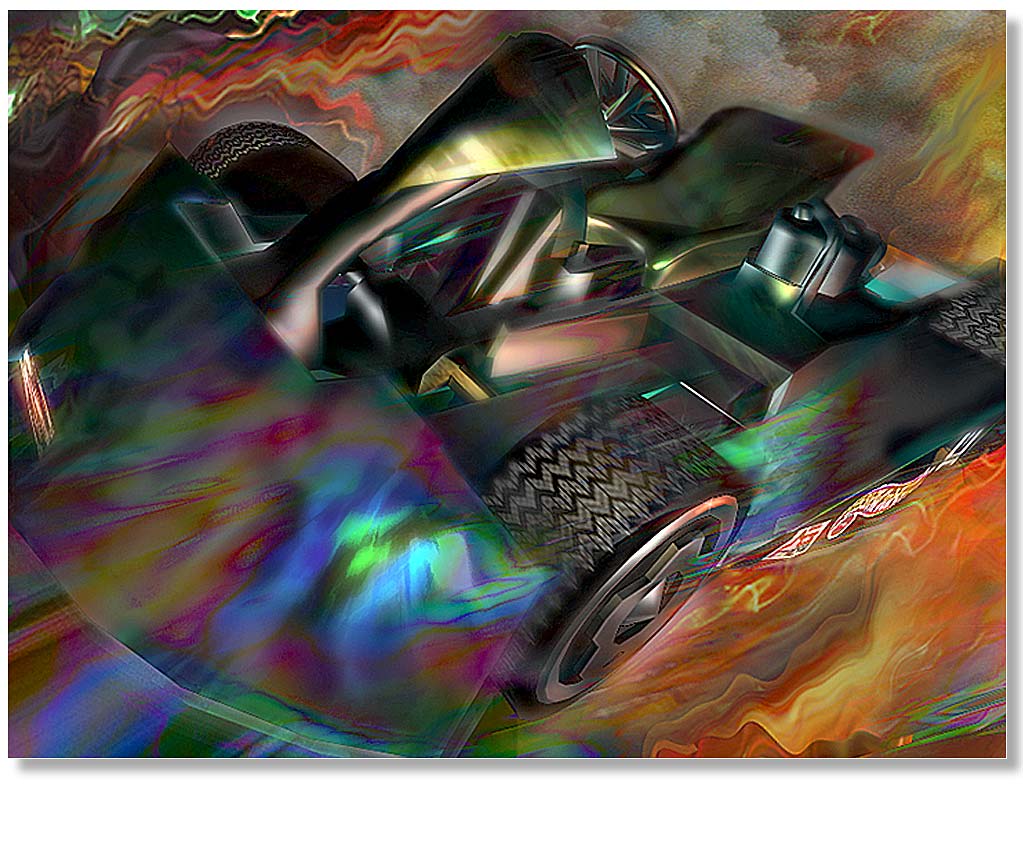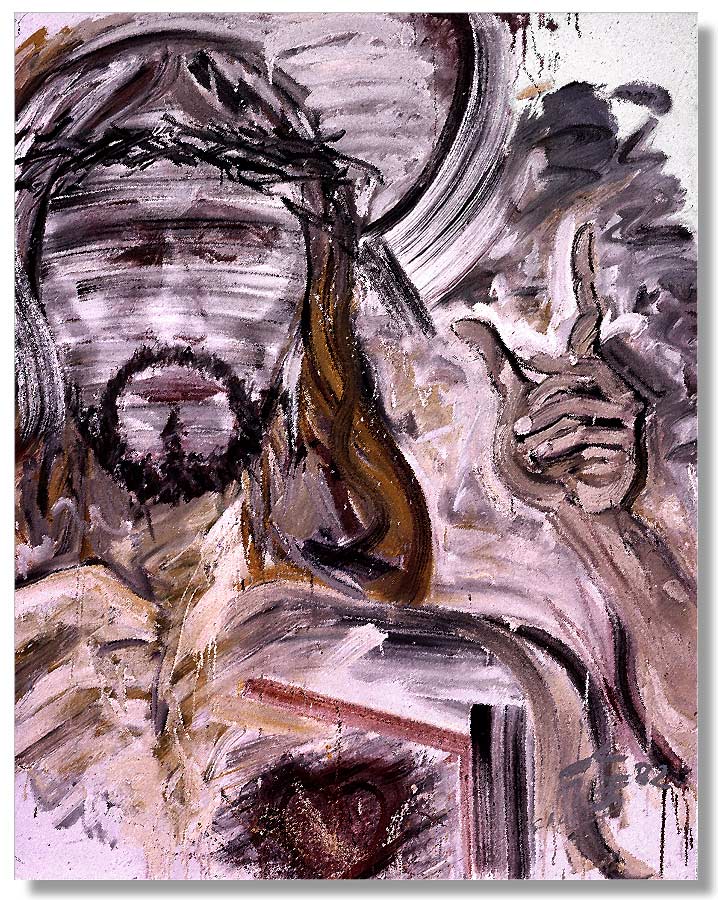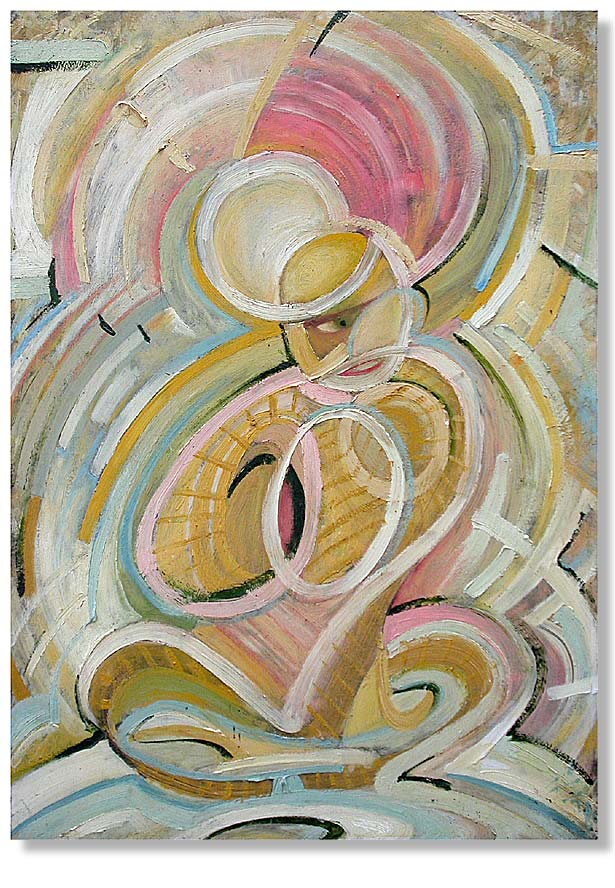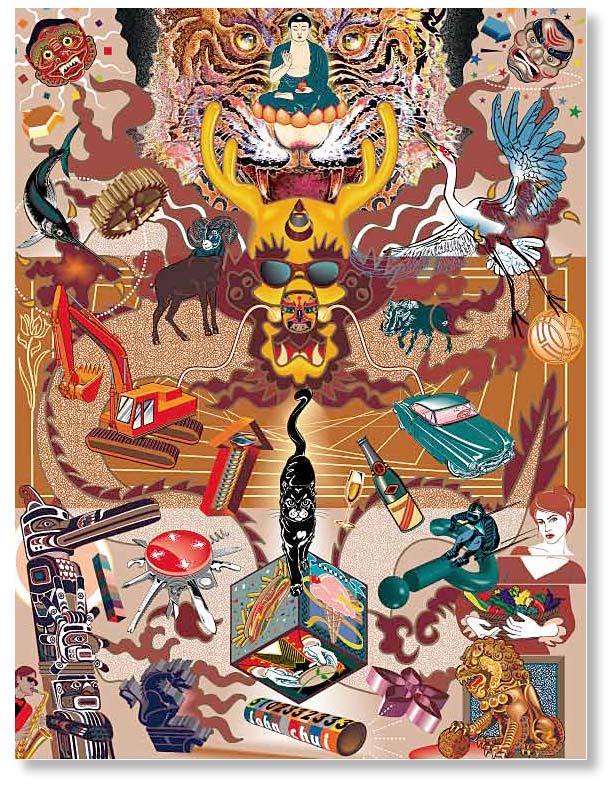An Interview with T.W. Chui by Andrew Werby
Q. How did you decide to become an artist?
A. Those difficult formative years in an adoptive family, and growing up a tough kid on the streets of Hong Kong, somehow formed an unexpected introspective side in me that became obsessed with drawing and painting. Though this part of me went unrecognized until a special someone came along who became my muse and inspiration. When I moved to the USA at the age of twenty-three, leaving the business oriented city behind, I suddenly felt free to explore my artistic aspirations. I became involved in several interlocking circles of SF Bay Area artists and musicians who exemplified the burst of artistic freedom that flowered at the time. At the third year I managed to have a solo show in San Francisco, and received much encouragement from San Francisco Chronicle critic Allen Temko. After that, I felt there could be no turning back.
Q. How would you differentiate the way you make and respond to art from the way artists with formal art-education backgrounds?
A. I was offered a full scholarship by the San Francisco Art Institute. I turned it down due to the fact that I was an immigrant and a starving artist. So I had to read a lot of books to learn about art history, and struggle to articulate various theories about painting. After working with many graduates from a famous San Francisco Academy, I think many artists who are shaped by academic training tend to acquire a lot of other people's expertise, particularly those of their teachers. They also have to deal with the formalism in styles and trends not necessarily beneficial to their originalities. Whereas a self-taught artist, I have had to find my way in comparative isolation within a chosen sphere of influences, but the aesthetic decisions I've made, such as they are, I've made on my own.

Q. With no formal training, how did you acquire the diversity of techniques you use on oil, air brush, pen-and-ink, graphic designs and 3D animation?
A. I learned to paint and draw by trial and error. The process actually helped me to develop an experimental attitude toward art. I can play with a variety of media without feeling bound by rules. Looking back, I can see that my early paintings were rather over-worked. I was trying to put my whole world into each single canvas. After realizing that, I decided to experiment with Chinese calligraphic style in oil painting. Dancing along with large brush strokes I became much more spontaneous, producing a series of large and effective expressionistic canvases. But I wasn't able to sell these paintings. So I began to practice graphic designs, experiment with line art and airbrush paintings to make a living. I found that these disciplines are all very systematic procedures. Though these conscious and precise effort somehow balanced the spontaneous creative expressions that characterized my calligraphic work in oils. In time I concluded that techniques are just cogent methods that assist us in the creation of a work of art. For artists whose goal is originality and innovation, I've found that a spiritual conviction in the arts, in a synthesis of self-expression and coupled with an experimental attitude yields the best technique.

Q. You grew up in China and Hong Kong. Did you get any training in traditional Asian art techniques?How has your work evolved up to the present?
A. I studied Chinese landscape ink painting in high school. Unlike the drawing of human figures, it had little impact on me emotionally. When I was fifteen I saw a reproduction of Salvador Dali's "Geopoliticus Child Watching the Birth of the New Man" in a book store. The painting struck me somehow with a subliminal message of art and evolution. It exemplified the sort of transformation I seek in my work to this day. Later I was also inspired by Klimt, Monet, Miro, Pollack, De Kooning and many others. As my art became mature, I developed an appreciation for many different types of paintings, so long as I feel that they represent honest artistic effort.
My work began as a psychogenic visionary exploration, and evolved into a self-styled abstraction. Under the reviving passion for Chinese calligraphy, I moved on to a form of figurative expression. Then from economic necessity I started painting super-real paintings with an airbrush, and developed the engraving-style pen-and-ink drawings for the advertising industry. After a decade of experiments with digital art, I returned to painting with oil on canvas. Despite the changes of medium and audience, I think my works have always been an autobiographical expression, which at their core reflected an inward-focused search for spiritual growth.
Q. What is the current style of your work?
A. The current style of my work is a juxtaposition of realism and abstraction, which serves to emphasize the complexity of the human characters I portray. These works are more closely associated with expressionism than realism.
However, a painting is fundamentally a surface covered with colors congregated in certain forms. what is representational is an aesthetic conception; it is as dependent on conventions and means employed in the fictive process of art as is abstraction, its non-representational counterpart. To paint exclusively in one way or another is to accept a self-imposed orthodoxy at the expense of experimental sensibility. Thought reluctant, the stylistic rhetoric for the paintings in my recent series are termed 交叉線抽象畫 CrossHatch Abstract Line Painting. This genuine personal style is developed through selections from a wide spectrum of visual incidents mediated through a life-long creative process.
Q. What about your process...how do you get started on a painting; how do you work through it?
A. I prefer to paint portraits of people I know, in order to start with some psychological insight into their characters. I usually begin by loosely sketch out the figure, and splash a thin wash of oil paint directly onto the canvas as a starting point. After spending hours contemplating this initial formation of colors and forms. I won't resume painting until the seemingly chaotic mess resolves into a visual that appears to lead in a certain direction. I let the painting teach me how to approach it, as much as I determine its form of expression with whatever means come into my mind. It's fun to put a fine line here and a bold stroke there, and playing freely with the splash and spray, smash and scratch, on one layer after another until I get a total effect that satisfies me.
By and large I am an introspective painter. My art is a subjective expression of an interior reality, created through a partly unconscious process other than a conscious will to imitate a stylized objective reality. It is for this reason I paint with unguarded emotions like a dreamer wide awake with opened eyes. Consequently this lucid dreaming state has a therapeutic effect that transcends the mere production of a concrete visual. The deep psychological process I go through with each painting has always catalyzed a new cycle of transformation.
Q. There seems to be a spectrum of characters in your latest series of female portraits. What can you tell us about them?
A. The portraits in "The Daughters of Kali" are sex workers who perform sex acts that populate the world wide web. They are the sex goddesses we desirously worship in the privacy of our own homes, and disenfranchised women who are excluded by society. Here in these paintings I imply the Hindu Goddess Kali as a metaphor of the all consuming aspect of reality for these women. The mythological aspect of their existence as a play of timeless universal energy. As daughters of Kali, they are sex goddesses who absorb our desires. Their images alone enslave our senses and subdue the collective libido into a state of complacency. But who are these heavenly creatures when they live among us as human beings? They are shadowy figures deprived of identities, and many are victims of the brutal enterprise of human merchandise, often used up and forgotten within a few years. The plight of their existence is a human tragedy in the divine drama. These paintings explore the shadows cast between our secret desires and moral dilemma. I combine eroticism with horror to illuminate the psychological and physical violence of sex in love's absence.
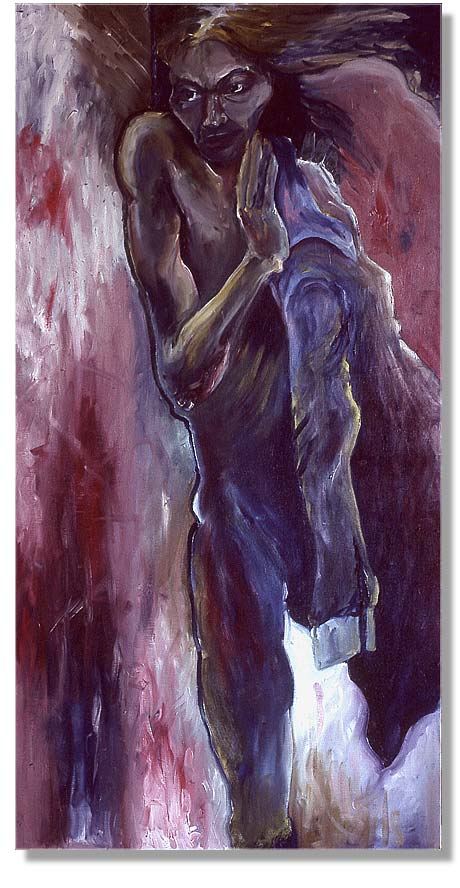
Q. Do you paint with a specific audience in mind?
A. I certainly did that when I was working commercially in graphic arts. Singing and dancing for a specific audience sells the ticket. In fine art I can explore my personal drama out of emotional necessity without worrying too much about what other people might think. By definition, commercial art designates a specific message to a targeted audience with a promise to better their lives. Fine art has no such purpose, but consequently is capable of transcending time and cultural boundaries to effect a transformation in the collective consciousness.
Q. What do you think is happening now in contemporary art?
A. I think we are in the first hundred years of a second Renaissance. The public are increasingly interested in the arts. There is no shortage of great works outside of the mainstream. This is because most critics and curators seem unequipped to deal with pictorial styles beyond the repudiation of the past. As a result, artists who make a splash in the contemporary art scene generally fall into two groups: Sensationalists who paint famous people, mutilated nudes, or illustrative social commentaries; and Color-field Abstractionists whose paintings are devoid of intellectual and emotional content but focus entirely on ingenious formal technicalities. Since these types of works were designed to be visual charades that echo the general feelings of the public, their built-in recognition is uncontested because they tend to confirm the norm and prejudice in the collective experience, and rarely provoke or complicate our perceptions with any crux. Under the guidance of art dealers, academics, and museum curators, contemporary arts have managed to preserve their aesthetic and institutional values by eluding any disturbing practical consequences. I believe that the contemporary arts are caught in a temporary regressive state. A more discerning public interest in time will ultimately force these gatekeepers to open up to deeper levels of creative expression.
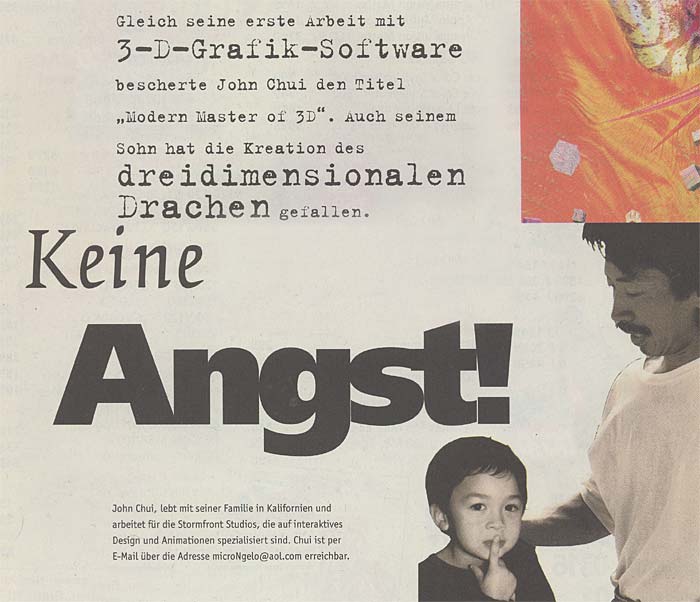
Q. What has been the biggest challenge for you in returning to fine art? How do you see your role evolving in the future?
A. After two decades working on visual communication for businesses and keeping up with endless technical innovations, picking up my brushes and painting is the easy part. The real challenge lies in renewing my conviction to champion a personal ideal of fine art, which is basically a spiritual problem more than an artistic one. For that matter. I simply decided to paint the women I adored without restricting myself in the means of doing so, other than feeling and conveying their characters with utmost honesty. Soon it became obvious to me that outside of a general appreciation of their aesthetic values, the subtle complexity in these paintings could be comprehended only by a few discerning eyes. Influenced by my readings in Jungian psychology, I began to explore the portrayal of the universal feminine archetype in the "Daughters of Kali" series. I found that the challenge in these paintings is to balance the reason of its imagery with the inference of its form. To separate sensationalism with an essence of conscience in aesthetic, and to reveal a qualm of truth within the visual metaphor.
Art is independent of reason but has its logic. It has no practical function yet is essential to evolution. I believe that my pursuit of artistic integrity is only a personal attempt to evolve spiritually. As a Chinese-American artist I hope to imbue a broader cultural and spiritual perspective to an art form that is preponderantly of a self-referential European lineage.
* Andrew Werby is a sculpture technology writer and the founder of United Artworks in the San Francisco bay area. He is a multi-discipline sculptor whose works exhibit worldwide. For information on sculpture-related topics and current art news. Contact Andrew Werby at: http://www.computersculpture.com/


